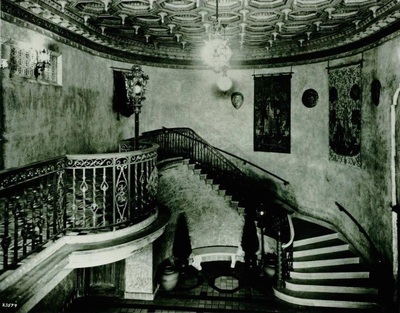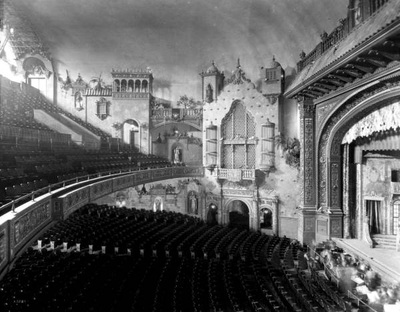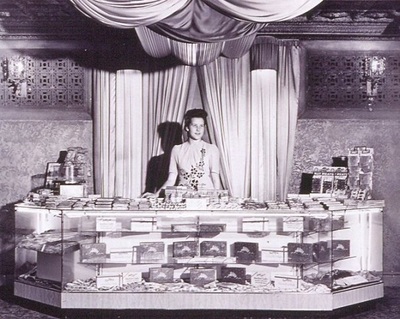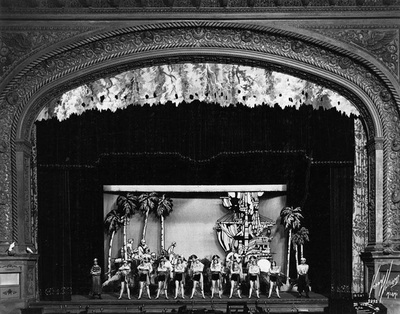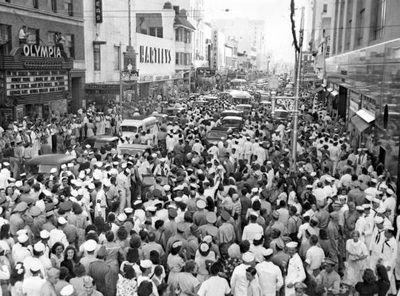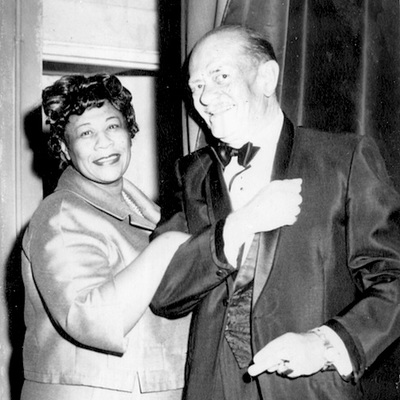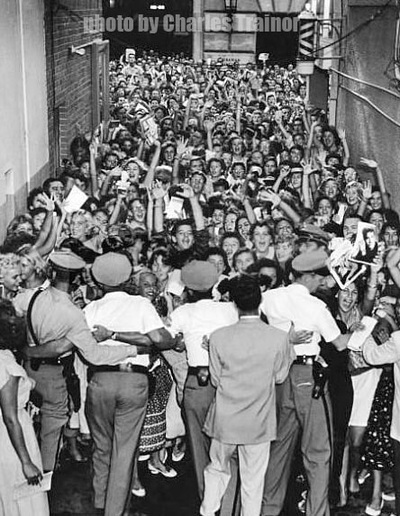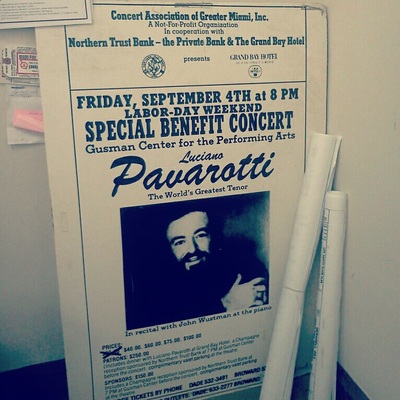UPDATE: We no longer manage the Olympia Theater. For information on Olympia Theater contact:
Yunior Santana at the City of Miami [email protected] • 305.575.5057
For any questions regarding Van Gogh: The Immersive Experience, contact:
Booking/Ticket Info: 305-833-9057 • https://feverup.com/m/96189
Event Coordinator: Mario Iacampo [email protected]
Yunior Santana at the City of Miami [email protected] • 305.575.5057
For any questions regarding Van Gogh: The Immersive Experience, contact:
Booking/Ticket Info: 305-833-9057 • https://feverup.com/m/96189
Event Coordinator: Mario Iacampo [email protected]
UPDATE: Olympia Theater now managed by City of Miami

Like all arts organizations, Olympia Center Inc. had a difficult year in 2020. The cost and effort of maintaining a COVID-19 pandemic shuttered venue with major capital needs and urgent repairs was not sustainable. Our Board of Directors and Executive Staff faced the difficult decision to return management and operation of the historic Olympia Theater & Office Building to the City of Miami and embrace instead, full-time producing and presenting Performing Arts, Visual Arts, History & Humanities programming for audiences in Downtown Miami and throughout South Florida as Olympia Arts MIAMI.
For information on the Olympia Theater contact:
Yunior Santana at the City of Miami [email protected] / 305.575.5057
For information on the Olympia Theater contact:
Yunior Santana at the City of Miami [email protected] / 305.575.5057
Downtown Miami's Historic Performing Arts Center – Since 1926
Tucked into Miami’s contemporary skyline is an enchanting Mediterranean courtyard with shimmering stars and golden balconies. Majestic turrets and towers suggest another era when performances were events, and grand theaters provided a dreamlike escape from the modern world.
The Olympia Theater is not just a “venue” – it is the jewel of South Florida arts and entertainment facilities, affording South Florida’s diverse community and its international guests a unique cultural experience that defies comparison.
The Olympia Theater is not just a “venue” – it is the jewel of South Florida arts and entertainment facilities, affording South Florida’s diverse community and its international guests a unique cultural experience that defies comparison.
History & Restoration
The Olympia Theater opened in 1926 as a silent movie palace and amazed the public with its stunning Moorish architecture, perfect acoustics and simulated night sky, complete with wafting clouds and twinkling stars. It also achieved fame as the first air-conditioned building in the South.
The “talkies” and Vaudeville soon arrived at the Olympia, and for more than 40 years the theater was the number one entertainment center in Miami. It was one of the last theaters in the country to showcase Vaudeville acts.
Throughout its history, the Olympia has been host to the world’s most exciting performers in the arts and entertainment community. Cultural icons such as Elvis Presley, B.B. King, Luciano Pavarotti and Etta James have provided memorable evenings under the Olympia Theater's stars. The theater has also hosted today’s best-known pop stars and is a favored venue for concerts.
In 1975, South Florida business tycoon and philanthropist Maurice Gusman saved the aging theater and adjacent Olympia Office Building from demolition then donated them to the City of Miami in 1975. Thanks to extensive restorations in the 1970s, overseen in part by famed architect Morris Lapidus, the theater was named to the National Register of Historic Places in 1984.
Time continued to take its toll on the Olympia, however, and by the late 1980s virtually every structural system of the theater was in need of repair and replacement. The roof had several leaks that had damaged the theater’s historic paint and plaster as well as the seating and carpeting in the auditorium. The HVAC system had to be entirely replaced. Electrical, sound systems, and plumbing all required upgrades.
Noted restoration architect Richard J. Heisenbottle, AIA, was retained to develop an ambitious, multi-year plan for additional stabilization and restoration work. In order to minimize loss of income for the theater, construction was planned to occur during only the summer months, when bookings were normally at a minimum. Critical components were broken down into construction segments that could be completed in three months. During the rest of each year, the architectural and engineering team completed plans and theater management secured funds for the next round of work.
While the structural repairs were underway additional projects were launched to make the theater more attractive to promoters. The stage was enlarged and new lighting and audio equipment were installed. The theater’s already sublime acoustic properties were left intact.
The theater owes its distinctive character to architect John Eberson, the master of “atmospheric” theater design, and it is one of the few Eberson theaters around the world still standing. Restoration of Eberson’s original design scheme, including original colors and finishes, was another top priority of the construction plan. Following detailed analysis, decorative painters restored the original, vibrant paint scheme to the decorative plasterwork throughout the theater. Seventies-vintage plastic seating was replaced with wood-and-brass seats boasting historically appropriate detailing. Even the new carpeting was custom-loomed to match the 1926 original.
Today, as the restoration work continues, Miami’s most beloved cultural venue has retained its stature in a Downtown that continues its own transformation. High-rise office buildings and glittering luxury condominiums have replaced many of the theater’s aging neighbors. Downtown Miami is once again becoming a place to live, work, shop and play, and the Olympia Theater is at the heart of the action – just as it was in 1926.
The “talkies” and Vaudeville soon arrived at the Olympia, and for more than 40 years the theater was the number one entertainment center in Miami. It was one of the last theaters in the country to showcase Vaudeville acts.
Throughout its history, the Olympia has been host to the world’s most exciting performers in the arts and entertainment community. Cultural icons such as Elvis Presley, B.B. King, Luciano Pavarotti and Etta James have provided memorable evenings under the Olympia Theater's stars. The theater has also hosted today’s best-known pop stars and is a favored venue for concerts.
In 1975, South Florida business tycoon and philanthropist Maurice Gusman saved the aging theater and adjacent Olympia Office Building from demolition then donated them to the City of Miami in 1975. Thanks to extensive restorations in the 1970s, overseen in part by famed architect Morris Lapidus, the theater was named to the National Register of Historic Places in 1984.
Time continued to take its toll on the Olympia, however, and by the late 1980s virtually every structural system of the theater was in need of repair and replacement. The roof had several leaks that had damaged the theater’s historic paint and plaster as well as the seating and carpeting in the auditorium. The HVAC system had to be entirely replaced. Electrical, sound systems, and plumbing all required upgrades.
Noted restoration architect Richard J. Heisenbottle, AIA, was retained to develop an ambitious, multi-year plan for additional stabilization and restoration work. In order to minimize loss of income for the theater, construction was planned to occur during only the summer months, when bookings were normally at a minimum. Critical components were broken down into construction segments that could be completed in three months. During the rest of each year, the architectural and engineering team completed plans and theater management secured funds for the next round of work.
While the structural repairs were underway additional projects were launched to make the theater more attractive to promoters. The stage was enlarged and new lighting and audio equipment were installed. The theater’s already sublime acoustic properties were left intact.
The theater owes its distinctive character to architect John Eberson, the master of “atmospheric” theater design, and it is one of the few Eberson theaters around the world still standing. Restoration of Eberson’s original design scheme, including original colors and finishes, was another top priority of the construction plan. Following detailed analysis, decorative painters restored the original, vibrant paint scheme to the decorative plasterwork throughout the theater. Seventies-vintage plastic seating was replaced with wood-and-brass seats boasting historically appropriate detailing. Even the new carpeting was custom-loomed to match the 1926 original.
Today, as the restoration work continues, Miami’s most beloved cultural venue has retained its stature in a Downtown that continues its own transformation. High-rise office buildings and glittering luxury condominiums have replaced many of the theater’s aging neighbors. Downtown Miami is once again becoming a place to live, work, shop and play, and the Olympia Theater is at the heart of the action – just as it was in 1926.
Photo Gallery: Historic Olympia Theater in Downtown Miami
Olympia Arts MIAMI • 153 E. Flagler St., #1030 - Miami FL 33131
[email protected] • (305) 209-1233
[email protected] • (305) 209-1233






